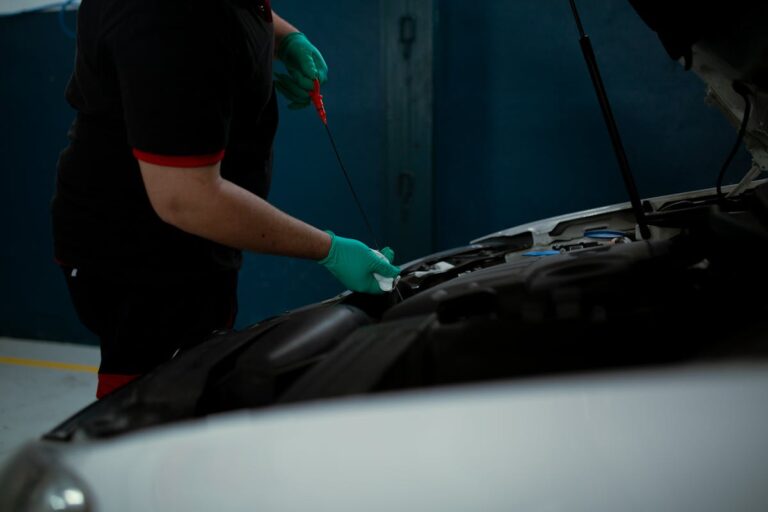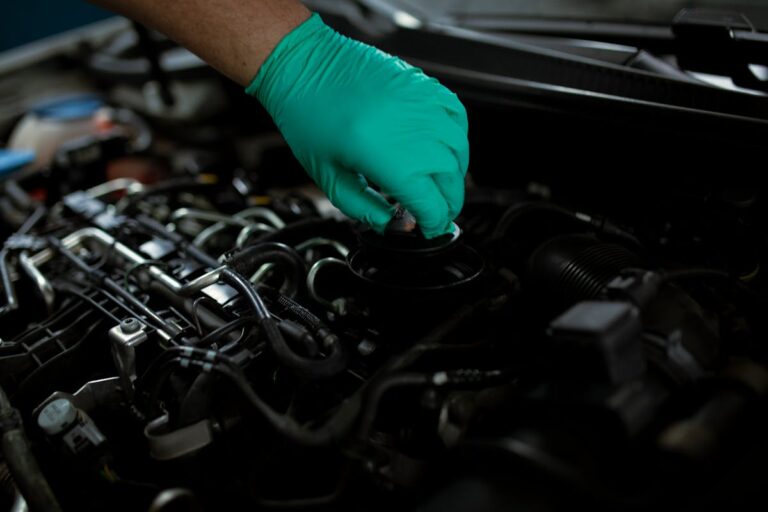As a vehicle owner, the sudden illumination of the check engine light can be cause for concern. The light, an integral component of your car’s onboard diagnostics system, is designed to alert you to potential mechanical or electrical issues that could impede vehicle performance or safety. But what precisely does it mean when this light comes on, and how should you respond? Understanding these questions is fundamental to effective vehicle maintenance and can often save you from costly repairs down the line. Let’s explore this topic further.
Understanding the Check Engine Light
The check engine light, often regarded as a car’s cry for help, serves as an important warning system in your vehicle. It is an element of the onboard diagnostics system (OBD-II) that monitors engine performance and emission controls. This alert is a proactive measure aimed at identifying and mitigating potential issues before they escalate.
The light diagnostics process commences when a fault is detected by the vehicle’s control module, which subsequently triggers the check engine light. Depending on the severity of the issue, the light may either flash or remain constant. A flashing light is indicative of a severe issue that requires immediate attention, while a steady light signifies a less urgent problem.
However, the illumination of the check engine light does not provide a specific diagnosis. To determine the exact issue, a diagnostic trouble code (DTC) stored in the vehicle’s memory needs to be retrieved using a scan tool. This allows for precise problem-finding and aids in rectifying any engine performance issues, ensuring that the vehicle operates at ideal levels. Understanding the function of the check engine light and its diagnostic process is vital to the maintenance and longevity of your vehicle.
Common Causes for Activation
Several factors can trigger the activation of the check engine light, and these typically pertain to potential malfunctions in the vehicle’s systems. These malfunctions can range from simple issues such as a loose gas cap to more complex problems like sensor malfunction or transmission trouble.
In the fuel system, a number of problems could arise that may activate the check engine light. These include issues with the fuel injectors, fuel pump or the fuel pressure system. Similarly, a sensor malfunction, such as those in the oxygen or mass airflow sensors, could also trigger the light. Exhaust issues, specifically with the catalytic converter, often cause the check engine light to illuminate.
Ignition problems, such as faulty spark plugs or ignition coils, are another common cause. Poor battery connection or defects may also result in the activation of the light. Additionally, lower than normal oil pressure or various electrical faults could contribute to this issue.
Transmission trouble, including slipping gears or overheating, is another potential cause. Finally, vacuum leaks, usually resulting from cracked or loose hoses, are common culprits. Recognising these causes can help to identify and address problems quickly, ensuring your vehicle remains in ideal condition.
Immediate Actions to Take
Upon the illumination of the check engine light, certain immediate actions are vital. This begins with interpreting the alert and evaluating the overall operational state of the vehicle to gauge any immediate risk. Subsequently, seeking professional assistance is imperative to guarantee accurate diagnosis and remediation of the underlying issue.
Understanding the Warning Sign
In response to the illumination of the check engine light on your vehicle’s dashboard, your immediate actions can greatly influence the outcome. This warning sign should not be ignored, as it typically denotes a potential malfunction that could impact your engine performance. It’s essential to understand that this light is part of the car’s integrated diagnostic system, which monitors the operation of various engine components.
The light activates as a response to a signal from a sensor that has detected a fault. Some warning indicators may suggest minor issues like a loose gas cap, while others could signify severe problems like a misfiring engine. In each scenario, the goal is to prevent further damage and maintain peak engine performance.
Upon noticing the check engine light, the first step is to reduce load on the engine; avoid sudden accelerations and high speeds. Next, check whether the light is steady or flashing. A steady light indicates a non-emergency situation, although you should still schedule a diagnostic check. A flashing light necessitates immediate attention, implying a severe issue that could lead to significant engine damage if not promptly addressed.
Assessing Vehicle’s Condition
Once the check engine light appears, evaluating the vehicle’s condition becomes paramount. A clear assessment of vehicle performance is vital to ascertain the severity of the issue at hand. Immediately, pay attention to any unusual noises, vibrations, or changes in the vehicle’s performance. A misfiring engine, reduced fuel efficiency, or difficulty in accelerating could be indicative of potential engine-related issues.
Next, perform a basic engine diagnostic procedure. Modern vehicles are equipped with an on-board diagnostic system (OBD-II) that can provide valuable insight into the problem causing the check engine light to illuminate. To access this information, an OBD-II scanner is necessary. Once plugged into the vehicle’s diagnostic port, it can read error codes that provide a starting point for troubleshooting.
Monitoring the vehicle’s temperature gauge is also essential. An overheated engine may cause the check engine light to come on. If the temperature gauge is in the red or the vehicle is emitting steam, it should be switched off immediately to avoid further damage.
Contacting Professional Assistance
After conducting a preliminary assessment and diagnostic procedure, it may become evident that professional help is required. The complexities of modern vehicles often necessitate expert diagnosis to pinpoint the exact issue causing your check engine light to shine.
When seeking professional advice, it’s vital to proceed in a structured and effective manner. Here are four steps to follow:
- Identify a reputable mechanic or auto repair shop: Use online reviews, ask for recommendations from friends or family, or check the Better Business Bureau for accredited shops in your area.
- Describe the problem accurately: Provide the mechanic with a detailed account of the symptoms your vehicle has been exhibiting. This will aid in their diagnostic process.
- Ask for a written estimate: Before any work begins, request a detailed, written estimate for any suggested repairs. This can help you avoid unexpected costs.
- Get a second opinion if necessary: If the proposed repairs are extensive or expensive, don’t hesitate to seek a second opinion.
Decoding Check Engine Light Codes
Deciphering check engine light codes, also known as Diagnostic Trouble Codes (DTCs), can offer valuable insight into the health of your vehicle. Familiarity with common check engine codes can simplify the troubleshooting process, allowing for more efficient problem-solving. In the following section, we will detail the process of interpreting these codes and discuss some of the most frequently encountered issues associated with the check engine light.
Understanding Diagnostic Trouble Codes
Interpreting diagnostic trouble codes (DTCs) is a crucial step in addressing the issue signified by an illuminated check engine light. These codes, read by diagnostic tools such as code readers, offer a standardised method of identifying problems within a vehicle’s operating systems.
- Understanding the Format: DTCs typically consist of a letter followed by four digits. The letter signifies the system involved – ‘P’ for powertrain, ‘B’ for body, ‘C’ for chassis, and ‘U’ for undefined. The first digit after the letter indicates if the code is generic (0) or manufacturer specific (1).
- Code Readers and Scanners: Code readers are basic diagnostic tools that can read and clear codes. Scanners provide more extensive data, displaying the DTCs alongside real-time streaming data.
- Interpreting the Codes: The final three digits of the DTC provide specific information about the fault. The second digit identifies the sub-system involved, while the last two digits give a specific fault code.
- Professional Diagnosis: Despite the availability of code readers, professional diagnosis is advised due to the complexity of modern vehicle systems and the possibility of multiple codes being triggered by a single problem.

Common Check Engine Codes
Maneuvering the landscape of common check engine codes, often referred to as decoding check engine light codes, requires a blend of technical expertise and practical knowledge. These codes, known as Diagnostic Trouble Codes (DTCs), are alphanumeric sequences that correspond to specific vehicle malfunctions.
The common code definitions fall into the categories of powertrain (P), body (B), chassis (C), and network communication (U) codes. Each category has thousands of codes, which are further divided into subgroups. For instance, P0300 indicates random/multiple cylinder misfire detected, a typical error message that signals irregularities in the engine’s combustion process.
P0420, another common code, signifies that the catalyst system efficiency is below the threshold. This usually points to issues with the catalytic converter or the oxygen sensors. P0171, on the other hand, means the system is too lean, suggesting that the air-fuel mixture has excessive air. This could stem from various sources such as leaks in the intake manifold or malfunctioning fuel injectors.
Deciphering these codes provides the first step in diagnosing vehicle problems. However, it is crucial to understand that these codes are starting points and not definitive diagnoses. They guide the troubleshooting process, which will be discussed in the next section.
Troubleshooting Check Engine Light
Maneuvering through the labyrinth of check engine light codes requires a systematic approach and an understanding of the underlying vehicle systems. The codes can appear cryptic, but they communicate specific issues affecting engine performance. Decoding these codes aids in identifying the precise problem, whether it’s a sensor malfunction or other engine-related issues.
- Code Reader: Invest in a reliable diagnostic code reader. When the check engine light appears, connect the reader to your vehicle’s diagnostic port to retrieve the error codes.
- Decipher the Code: Each code corresponds to a particular issue. Numerous resources are available online, including databases that explain what each code represents.
- Inspect Relevant Systems: Based on the decoded error code, inspect the corresponding system. For instance, if the code signifies a sensor malfunction, check the relevant sensor’s condition and connection.
- Professional Assistance: If you struggle to identify or resolve the problem, consult a professional mechanic. They have the advanced diagnostic tools and the expertise to interpret complex codes and restore your engine’s performance.
When to Visit a Mechanic
One might wonder when it is appropriate to take a vehicle to a mechanic upon noticing the check engine light. The short answer is, it depends on the situation. It’s important to understand that a check engine light is a car’s way of telling you something is wrong. It could be a minor issue like a loose gas cap, or it could indicate something more serious that requires immediate attention, such as a misfiring engine.
If the check engine light comes on and it’s flashing, this is a strong sign that there’s a severe issue that needs immediate mechanic consultation. The flashing light indicates that the problem is critical and if not attended promptly, could lead to substantial damage. In such cases, pull over when it’s safe to do so and call for professional help.
If the light comes on and remains steady, it’s advisable to schedule a service appointment at your earliest convenience. While it may not indicate an emergency, it’s better to be safe than sorry. Ignoring a steady check engine light can lead to more significant, more expensive problems down the line. Always prioritize your vehicle’s health and safety.
DIY Fixes for Common Issues
While taking your vehicle to a professional is often necessary when the check engine light turns on, some common issues might be resolved with a bit of hands-on troubleshooting. With basic tools and a little knowledge about common sensors, you could perform DIY repairs and save money on engine maintenance.
Here are some easy diagnostics and simple checks you can do yourself:
- Loose or damaged gas cap: A loose or damaged gas cap is a common reason for the check engine light to illuminate. Simply tighten the cap or replace it if it’s damaged.
- Faulty oxygen sensor: Identify this issue with an OBD-II scanner. If faulty, the sensor can be replaced easily with basic tools.
- Malfunctioning mass air flow sensor: This sensor measures the amount of air entering the engine. A malfunction can affect fuel efficiency. You can clean or replace this sensor yourself.
- Ignition coil and spark plugs issues: With a multimeter, you can diagnose if your ignition coil or spark plugs need replacement.
Preventive Measures to Avoid Illumination
A significant percentage of check engine light incidents can be avoided by taking proactive measures to maintain your vehicle’s health. Preventive maintenance is an essential strategy in this regard, designed to identify and address potential problems before they escalate into costly repairs or safety issues.
Preventive maintenance involves a series of regular inspections and replacements of critical components. These include the engine oil and filter, air filter, fuel filter, and spark plugs. These may seem like minor elements, but they play key roles in your vehicle’s performance and longevity. Neglecting them could lead to poor fuel efficiency, decreased power, uneven wear and tear, and, ultimately, engine damage.
Regular inspections are equally important. They should encompass the engine itself, the exhaust system, the electrical system, and the suspension system. Trained mechanics can spot signs of wear or damage that might not be apparent to the untrained eye. Regular diagnostic tests can help detect issues in the early stages, preventing the check engine light from illuminating and ensuring the vehicle performs effectively for longer.
Frequently Asked Questions
What Are the Potential Costs Associated With Fixing a Check Engine Light Issue?
The potential costs to fix a check engine light issue can vary widely. They typically include diagnostic fees and repair costs, which can range from minor sensor replacements to major engine-related issues.
Can a Faulty Check Engine Light Affect My Vehicles Gas Mileage?
Yes, a faulty check engine light can impact your vehicle’s gas mileage. This is because underlying issues causing the light to come on often lead to diminished engine performance, subsequently lowering fuel efficiency.
Does Auto Insurance Typically Cover Check Engine Light Repairs?
Typically, auto insurance does not cover repairs related to a check engine light unless it’s due to a covered loss like an accident. Coverage options depend on policy specifics and the insurance company’s guidelines.
How Long Can I Drive My Car With the Check Engine Light On?
Driving with the check engine light on is not advisable due to potential damage. Diagnostic tools can help identify the problem swiftly. However, the light is a warning signal and should prompt immediate professional evaluation.
Can Check Engine Light Issues Cause a Vehicle to Fail an Emissions Test?
Yes, check engine light issues can cause a vehicle to fail an emissions test. The light indicates potential malfunctions that might affect emissions standards, making diagnostic testing essential to identify and resolve the problem promptly.





